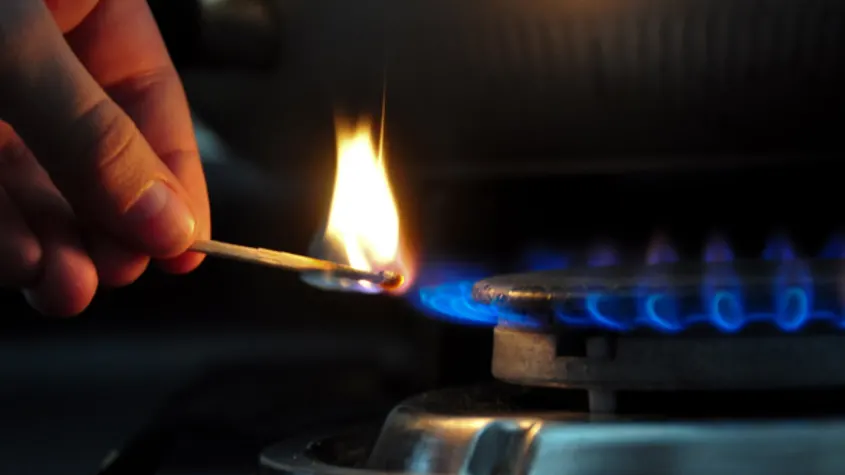Sustainability - Solar panels combined with electric heating
Sustainability is a catch-all term. That is, many things fall under the designation "sustainability. In these blogs we want to take you through the process of making your home more sustainable, specifically reducing energy costs, an item of our time.
By energy in these blogs we mean everything that is needed to meet the needs in the home, that is, heating, cooling, light, power, etc. So what you use while you are in the home.
Given that energy conservation is an important and, above all, profound topic on which there is much to be found, we will cover it in several blogs.
This blog is all about solar energy and how it can help you reduce your heating costs.
Gas consumption versus power consumption
In an earlier article - 'Sustainability - Interventions you can do yourself to reduce your burdens' - we already indicated that it makes perfect sense to set your heating to 18 degrees (or lower) and use an electric heater as supplementary heating. That way, you reduce your gas consumption and compensate for that need for heat through electric heating. An electric heater is an excellent option, especially if you have PV panels at your disposal. These heaters are available in many sizes and appearances, something for everyone. In this article, we focus on using PV panels in combination with electric heating. The ins and outs about electric heating and the considerations you will have to make will be explained in another blog.
Solar panels combined with electric heating
It sounds great, of course; you use your own generated electricity and convert it into heat with the result that you use less gas to heat your home. Not only does that sound fantastic, but it is! Nowadays, new homes are no longer delivered with a gas connection, so it is certainly possible, but entirely dependent on your situation. We have been experimenting with electric supplementary heating in combination with PV panels for some time, it can be done just fine. Unfortunately, we find that electric heating is still considered a no-go today. This is often because the consumption of electric heating is relatively high compared to the cost of heating using the central heating boiler. Given that prices have risen sharply, this turning point has now been reached by many. Then we leave out entirely the electricity generated using solar panels. Do you already have solar panels? Then chances are that electric (additional) heating is very interesting for you.
Basics of electric heating
When we talk about electric heating, you may have no idea exactly what we mean by that. In fact, there are several options, each with its own "economy label.
|
Type of electric heater |
Economy Label |
Purchase Price |
Applicable as a main heating system |
|
Infrared heating |
Highly energy efficient |
Price from €100,- |
No |
|
Accumulation heating |
Highly energy efficient |
Price from €600,- |
Yes |
|
Electric radiator |
Average consumption (depends on application) |
Price from €250,- |
Yes |
|
Electric floor heating |
Not energy efficient as a main heating system |
Price from €45,-/m2 |
Yes |
|
Electric convectors |
Not energy efficient |
Price from €25,- |
No |
|
Electric cable |
Not energy efficient |
Price from €25,- |
No |
|
Heat pump (air-to-air/earth heat etc.) |
Highly energy efficient |
Price from €2.500,- |
Yes |
|
Ceramic heating |
Not energy efficient |
Price from €30,- |
No |
From the table above, it can be seen that not every type of electric heating is suitable as supplementary heating. Depending on your situation, in the most common situations choose "Infrared heating" or "Electric convectors". In this case, we will not elaborate on the choice of the type of auxiliary heating other than that it is energy efficient, easy to implement or cheap to buy. The main difference between the two lies in how the heat is delivered to the environment. Infrared heating provides direct and pleasant heat transfer through direct radiation. With an electric convector, heat is transferred to the air. In many situations, you will find the heat transfer from infrared heating to be "finer. Both can sufficiently heat a room, depending of course on the model. If you want to heat a small room, we recommend a small convector because of the purchase price. If it concerns a larger room, for example up to 20 m2, then preferably choose an infrared type heater. These are more energy efficient, so you get more heat for your money.
Combination with solar panels
If you choose to meet the additional heat demand by means of electric auxiliary heating, then combining solar panels with electric heating is an excellent option. By supplementary heating we mean that you set the central heating to 18 degrees or lower and provide the additional heat using electric heating, either infrared heating or an electric convector. The latter depends on your situation and is discussed in another blog.
It is a very interesting alternative. After all, you no longer emit CO2 for the last part of heating, so in addition you are no longer dependent on fossil fuels such as gas. It used to be very interesting to feed power back to the grid. Currently, the grid is unfortunately burdened enormously, partly due to feed-in. For example, entire fields of solar panels are not connected to the grid, simply because the grid cannot process it. The result is that you receive less money back for feed-in and then the math is quickly done with today's gas prices. In winter, the heat demand is often higher, more cold comes in through cracks and the like, with the result that you have to use more electricity to meet this heat demand. In addition, there are fewer hours of light in the winter, which, simply put, means you generate less electricity. In this case, try putting the electric heater close to you so that you experience direct radiation.
You can reduce heat loss to some extent yourself, namely by sealing gaps with the effect of preventing draft problems. If you are interested, please read this article.
If you want to heat your entire home electrically, you may also need to make changes to the home's insulation envelope. As long as you lose a lot of heat, the costs for all-electric heating are often relatively high, even in the current situation. Of course, this also has to do with the need for hot tap and shower water. Do you have a well-insulated home? Then consult an installer, they can give you excellent information about the type of heating. They do this, among other things, by making calculations that are completely tailored to your situation. Of course, insulating your home will be covered in one of the upcoming blogs.
The choice of the number of solar panels and their capacity will also be discussed in another blog. The choice has to do with many more factors than just meeting additional heating needs.
Did you find this interesting? Leave a comment and also read our other blogs on sustainability.
If you have any questions about the above, don't hesitate and let us know. On this page you can ask the question to us.


